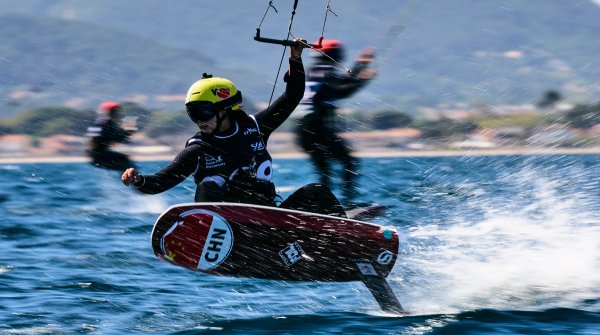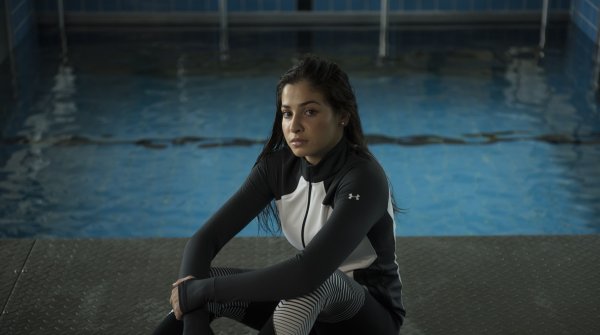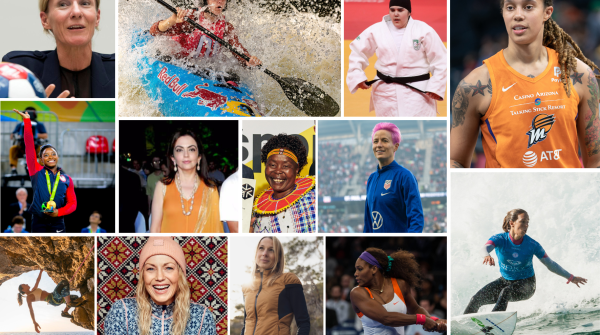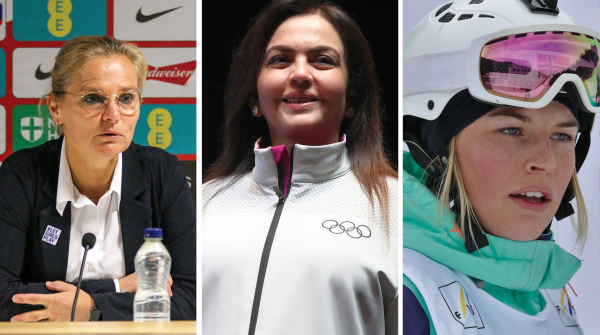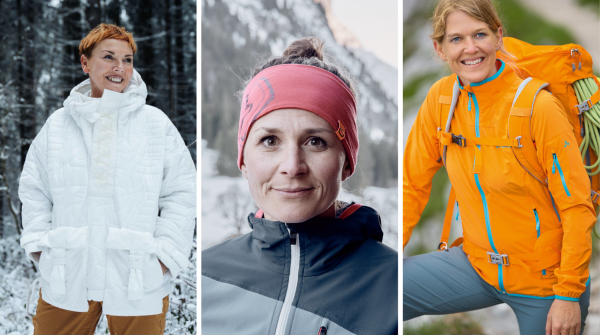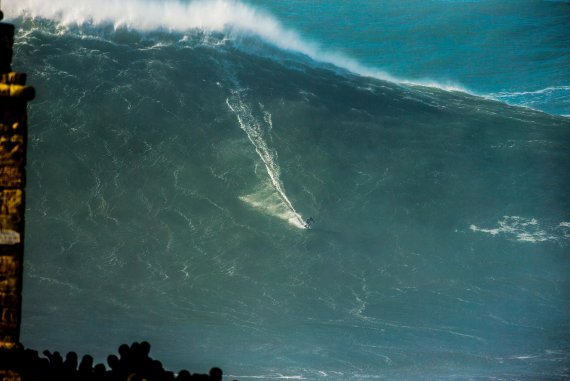
After a shoulder injury in winter of 2015, his following season was characterized by regeneration. Now Sebastian Steudtner wants to once again go on an all-out attack and build on his two wins at the WSL Big Wave Awards. In an interview with ISPO.com from 2017, he talks about the dangers and risks of his sport, about the difficulty of finding sponsors as an extreme athlete – and about his commitment to social projects.
ISPO.com: In your adoptive home of Portugal, the season for big wave surfing doesn’t start until the fall. What’s currently on the agenda for you?
Sebastian Steudtner: I’m preparing for my new season, training in Indonesia, and seeing to a social project for disadvantaged children. That takes up quite a bit of time.
What project is it?
The project is called, “We Make Waves” and is financed by the Laureus Sports for Good Foundation, for whom I also work as an ambassador. Special needs students at the Martin-Luther-King-school in Traben-Trarbach work for one year to participate in a surf camp in Portugal. There, we want to use surfing to convey the values that are important for an autonomous life. It’s about self-confidence, acknowledgement, and respect.
Read more here: all news and background stories about surfing.
“Big wave surfing is a high-performance sport”
How can a sport like surfing help socially and emotionally unstable children?
Through surfing, you can show children how to work towards a goal. In this case, it was the first wave they surfed by themselves. Children who focus on this concrete goal set aside their fears and oppositions and are extremely motivated. Since the whole thing takes place out in nature, it’s twice as fun for the kids. Learning in a group and the communal sense of achievement binds the kids together. For children who have to struggle with abuse, difficult family circumstances, or ADHD, it’s a huge accomplishment.
Extreme athletes like you who practice an exotic sport don’t have it easy finding sponsors. How did the cooperation with Mercedes-Benz come about?
That was a long journey for me. In sponsorship, the topic of credibility is incredibly important. Sponsors want to work with people who are authentic and stand for the values of the brand. I’m an absolute exotic, and that in two respects: As a surfer in Germany and a German in big wave surfing. That’s why it was so difficult for me to establish this credibility over the years. In the beginning, the media described me as the “hara-kiri guy” who surfs in the death zone.

Of course, that’s the wrong claim for any reputable brand.
Exactly, but over the years I managed to communicate in a credible way that I’m anything but a kamikaze guy, rather I do big wave surfing, train professionally, and minimize all risks. My two titles at the Big Wave Awards In 2010 and 2015 were definitely important to get this recognition, to make surfing more acceptable, and position myself as an authentic athlete.
And this sponsorship makes it possible for you to practice big wave surfing as a full-time job for the first time?
Yes, but I already live for surfing, since I emigrated to Hawaii when I was 16. To be able to afford to do that, I worked in construction. Later, I was able to earn my living in film productions and lectures. And today, through contracts, I have very clearly defined performances I have to fulfill as brand ambassador for Mercedes-Benz . Surfing was never an occupation for me, rather it was my life. Collaborations like the one with Mercedes-Benz now make it easier for me to focus completely on big wave surfing.
Read more here: Action Sports: An Industry Searching for the Way Out of Crisis
“Only a handful of surfers have drowned”
When a great wave breaks, 500,000 tons of water are in motion. How calculable is the risk in big wave surfing?
That’s a good question. My experience tells me that the risk is very calculable, because nothing bad has yet to happen to me. Looking at it completely rationally, two things can happen: Either you get a spinal injury in a fall, or you get water in your lungs. I know only one surfer, Carlos Burle, who broke his spine, and at most a handful of big wave surfers have drowned in the last ten years. If you put that in relation, little happens to the many surfers.
You mentioned previously that you minimize the risks of accidents as much as possible. What measures achieve that?
I always have a resident marine doctor onsite when I big wave surf with Dr. Haber, who can pump lungs and feed in a special oxygen mixture within five minutes. Then, a mobile breathing device aids in the resuscitation. If my spine is injured, he has a stretcher that can stabilize me for evacuation and prevents damage to the spinal cord. That’s how the risk stays pretty calculable for me. I’ve had way more threatening experiences from other people’s negligence when I drive then I do surfing in big waves. Big wave surfing also isn’t an extreme sport where lots of fatal accidents happen. The danger is definitely greater in base jumping, wingsuit flying, or extreme mountain climbing.
What about the rescue jet ski concept for big wave surfers that you’re working on?
It’s about developing a jet ski into a mobile rescue station where, in an emergency, you can get the injured surfer to a first responder immediately and safely evacuate them. A first prototype is almost ready. Since it’s impossible for me to implement the project along, however, I’m now on the hunt for people or companies who can help me.
What are your plans for the future?
I’ve decided to surf the biggest and the best waves in Nazaré for the next two years. To make that possible, I’d like to establish a base there that will offer us big wave surfers optimal training conditions on site, too. I’m also going to concentrate on two versions of big wave surfing: Paddle surfing and tow-in surfing.
- Awards
- Mountain sports
- Bike
- Fitness
- Health
- ISPO Munich
- Running
- Brands
- Sustainability
- Olympia
- OutDoor
- Promotion
- Sports Business
- Textrends
- Triathlon
- Water sports
- Winter sports
- eSports
- SportsTech
- OutDoor by ISPO
- Heroes
- Transformation
- Sport Fashion
- Urban Culture
- Challenges of a CEO
- Trade fairs
- Sports
- Find the Balance
- Product reviews
- Newsletter Exclusive Area
- Magazine


